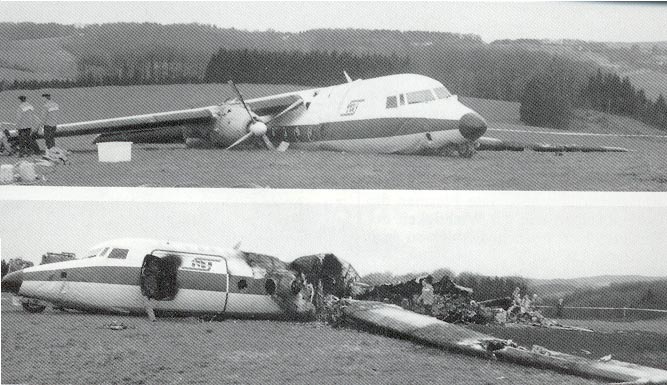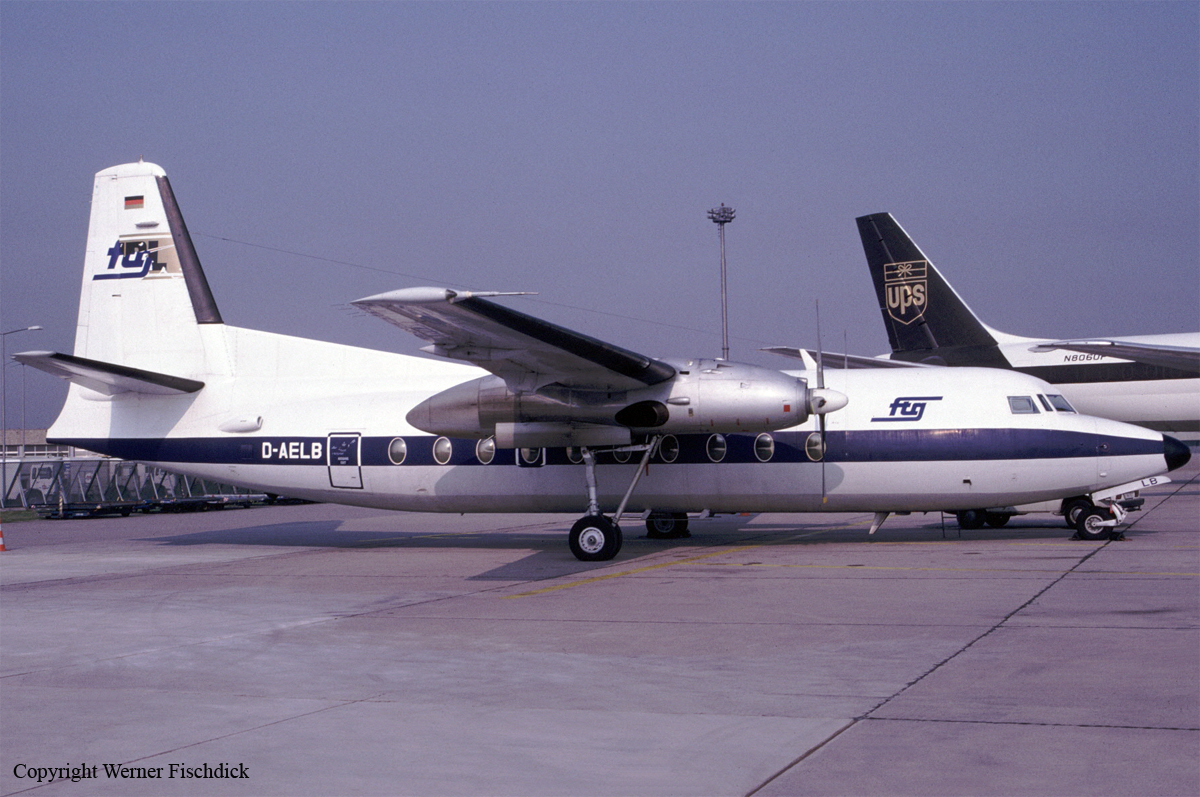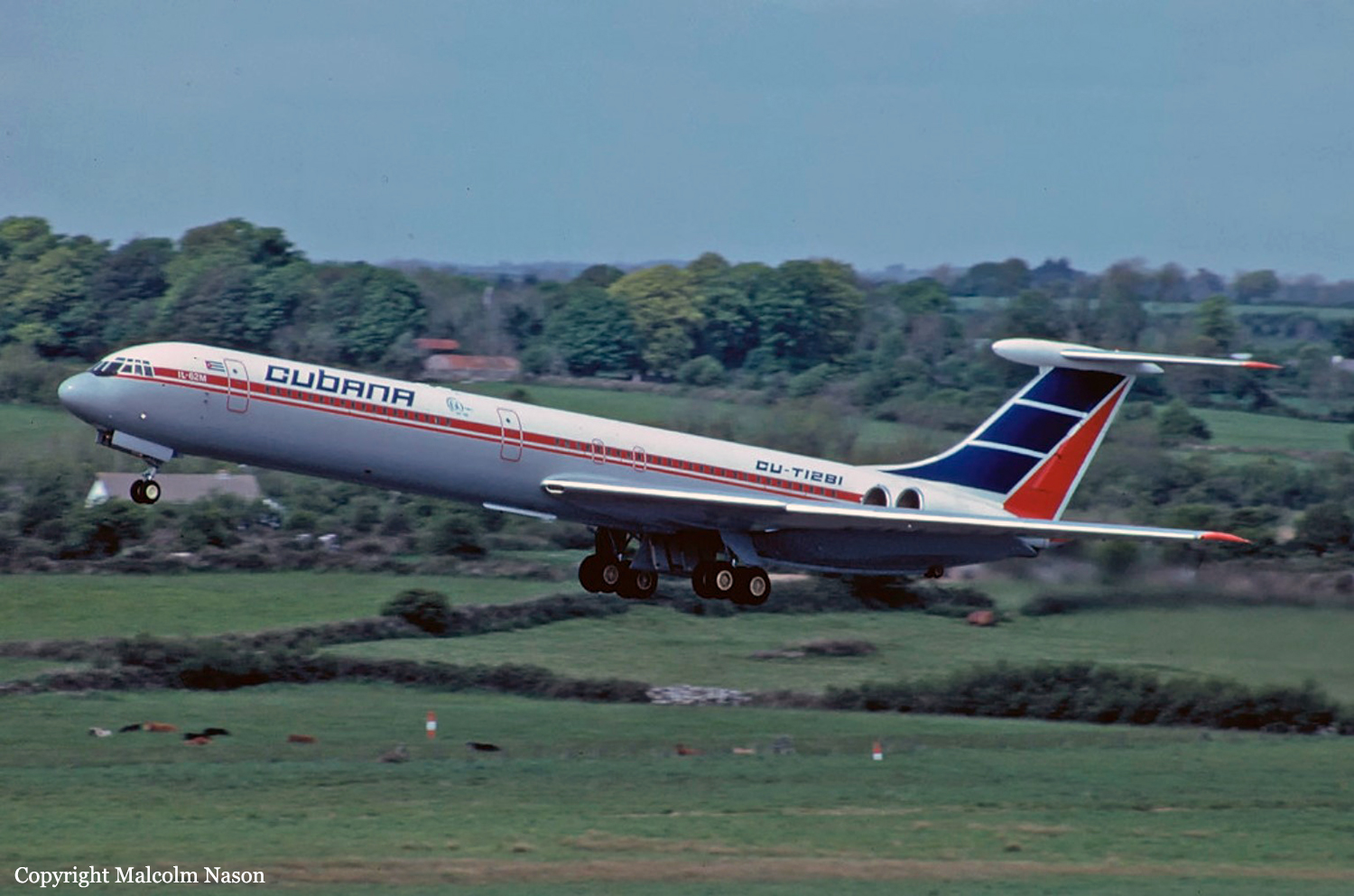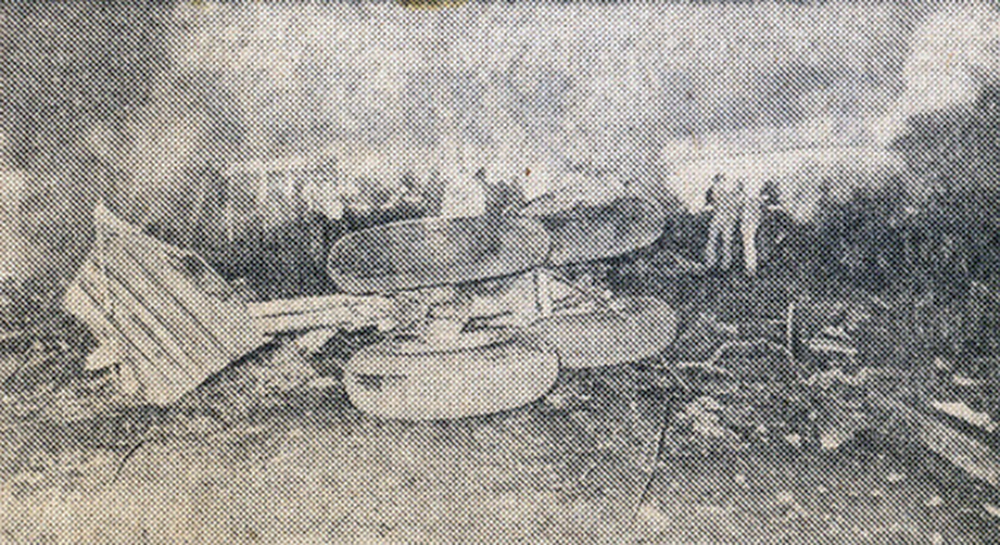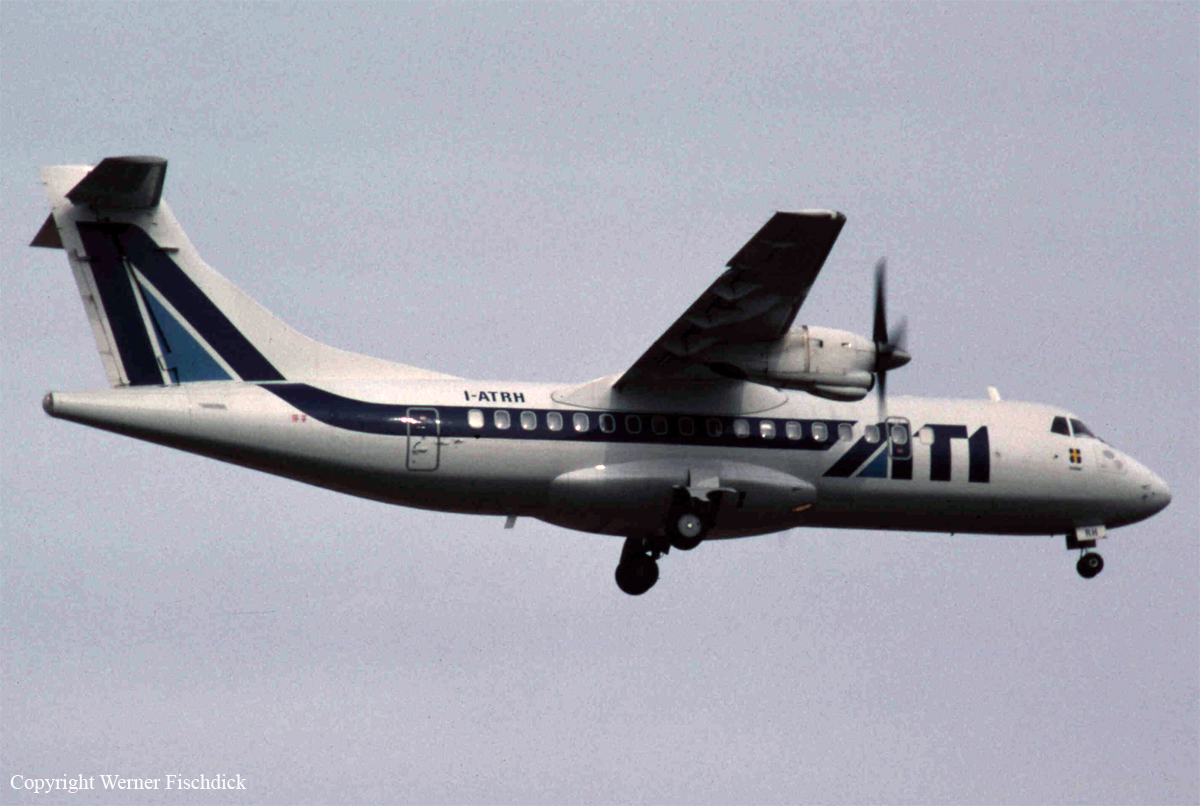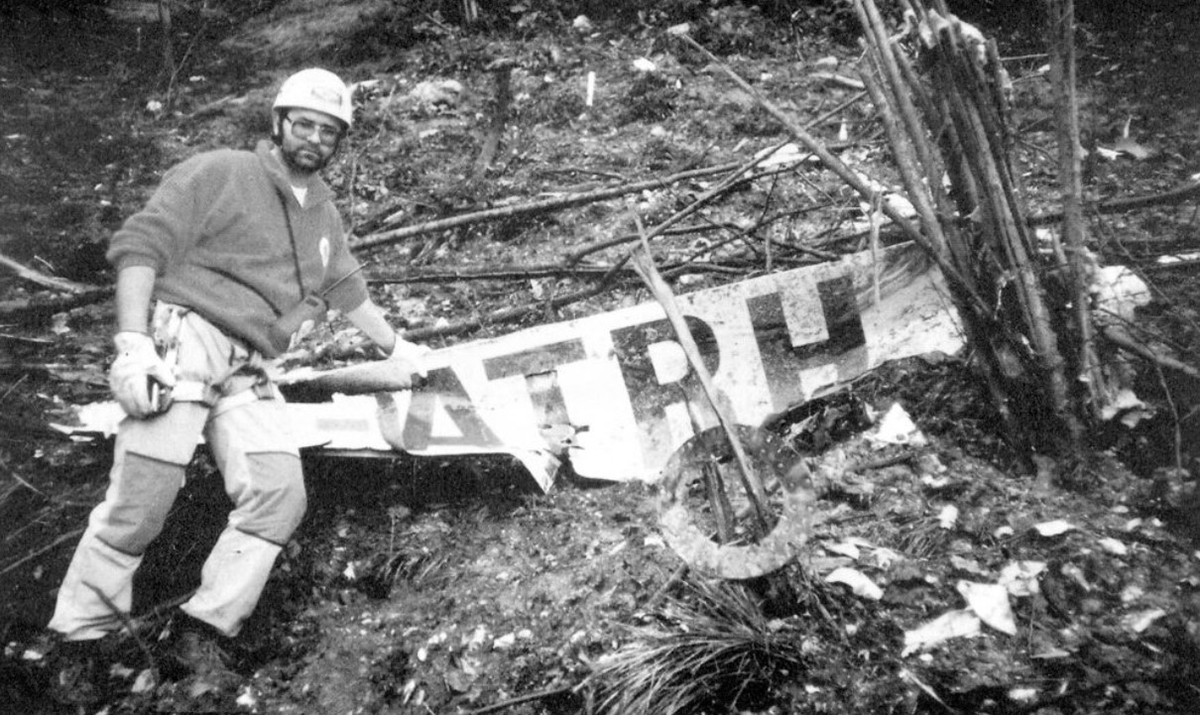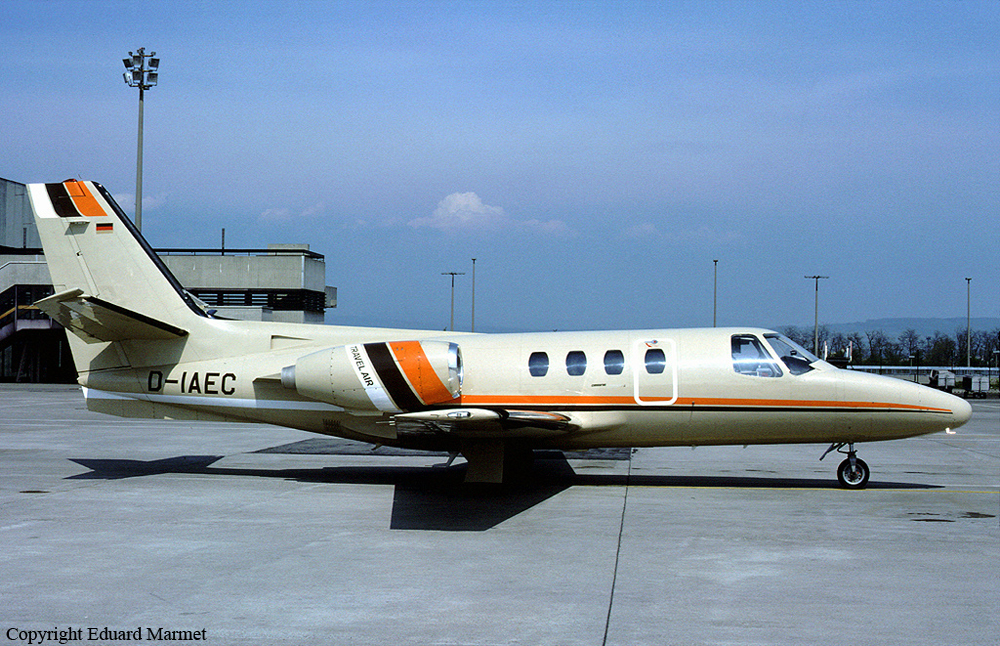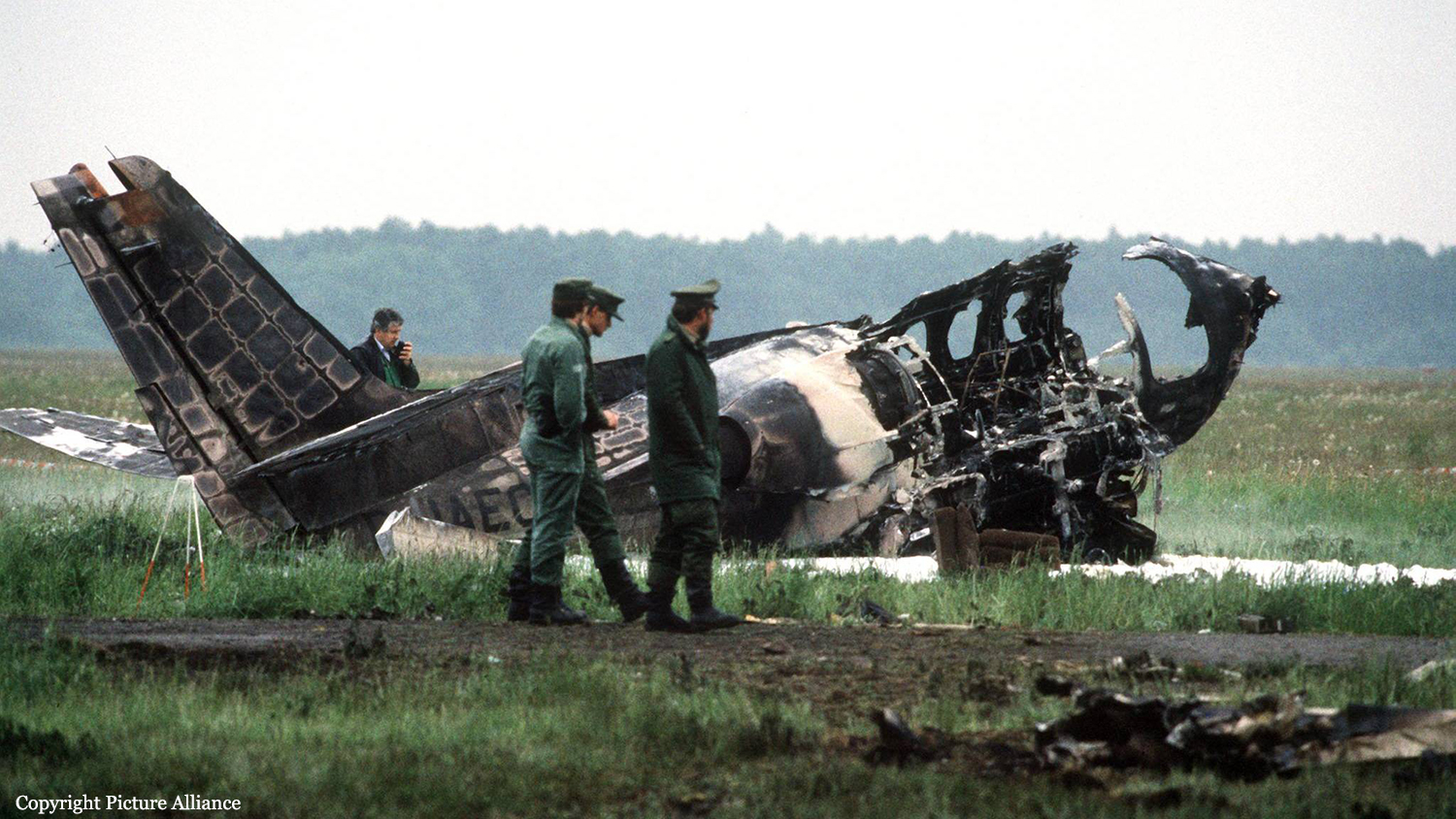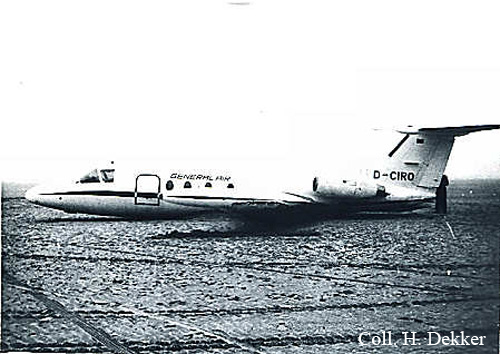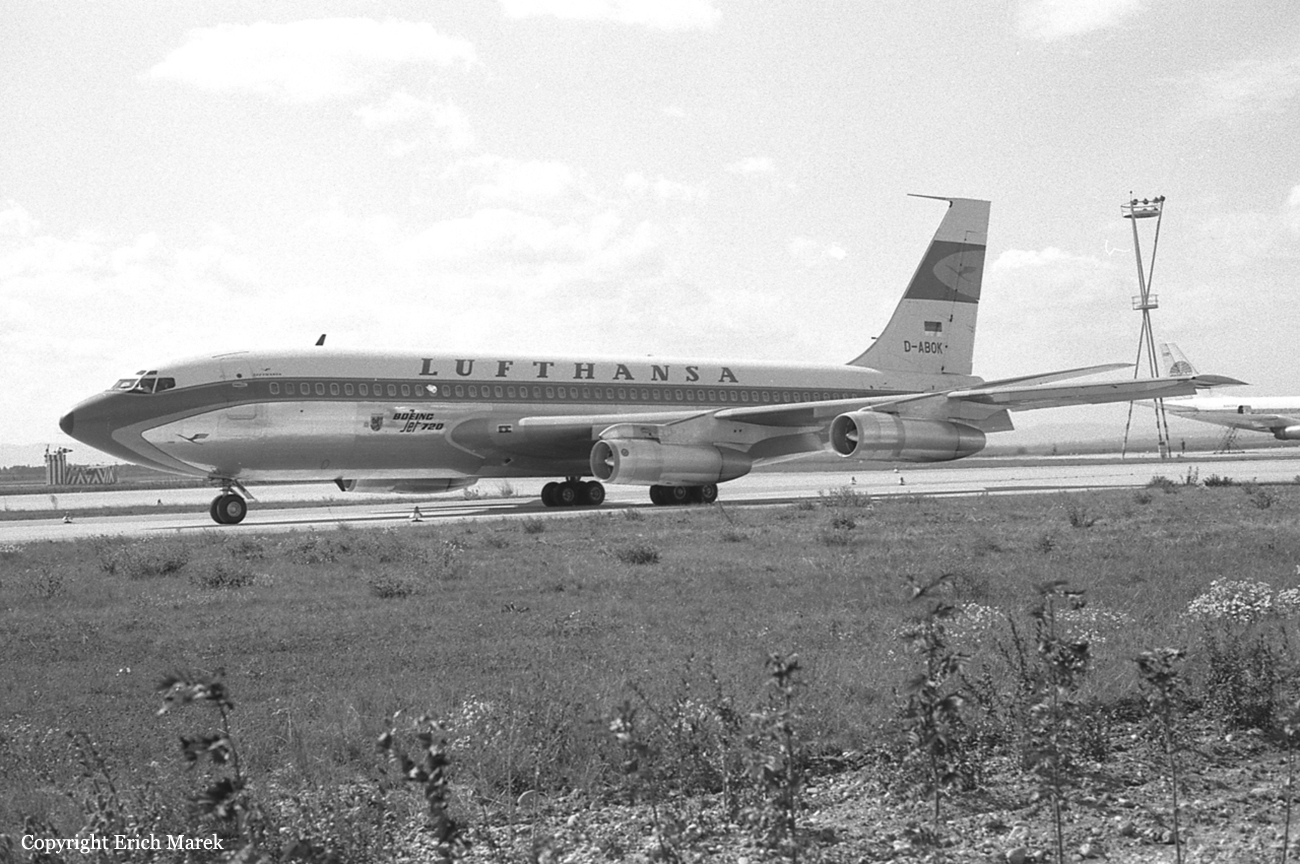Crash of a Fokker F27 Friendship 600 in Bergisch Gladbach
Date & Time:
Feb 24, 1990 at 1303 LT
Registration:
D-AELB
Survivors:
Yes
Schedule:
Cologne - Cologne
MSN:
10562
YOM:
1977
Crew on board:
2
Crew fatalities:
Pax on board:
0
Pax fatalities:
Other fatalities:
Total fatalities:
0
Circumstances:
The crew departed Cologne-Bonn Airport at 1248LT on a local training mission. While simulating stalls at a relative low altitude, the crew encountered technical problems with both engines which overheated. After the left engine caught fire, the crew decided to attempt an emergency landing in an open field when the left engine separated. The aircraft lost height and crashed near Bergisch Gladbach, about 13 km north of Cologne Airport, bursting into flames. Both pilots were seriously injured and the aircraft was destroyed.
